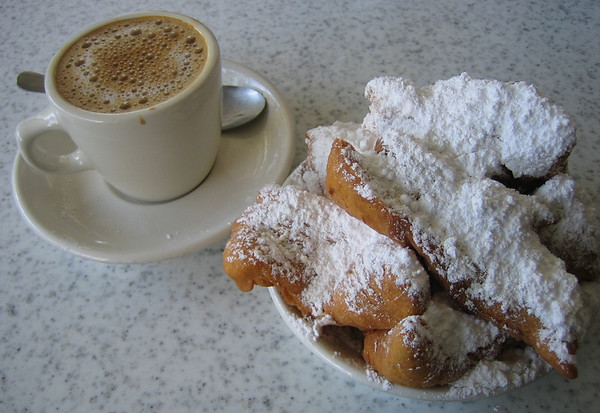
Beignets and cafe au lait at Cafe du Monde, New Orleans
Ah, beignets and funnel cakes. I can’t think of two more delectable, fried, sugar-coated snacks. After years of gorging on beignets each time that I visit New Orleans and of living next to Apple Frankie, the undisputed “funnel cake king,” I consider myself somewhat of an expert on the two. So, with a nod to the aforementioned A. Frankie, I shall attempt to determine, once and for all, which is truly the best greasy sweet.
Although I flew back from New Orleans over a month ago, beignets linger on my palate and mind. Blanketed with powdered sugar, these pillows of dough are served hot and as a trio at the Crescent City landmark Cafe du Monde. Light and oh-so sweet, they are a heavenly treat. To balance out the avalanche of sugar hitting my bloodstream and clothes, I pair beignets with a decaf, chicory-laced cafe au lait and plenty of napkins.
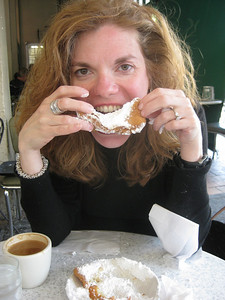
While I associate beignets with New Orleans, they actually originated in France. Made from the delicate, spongy pâte à choux, these airy, square pastries are found throughout the country. They likewise pop up in such French-influenced regions as Quebec and, of course, New Orleans.
Because of their lightness and semblance to a doughnut, I may eat beignets for breakfast or as a late night bite. I would not do this, though, with a funnel cake. Heartier and bigger than a beignet, this golden latticework of deep-fried batter seems better suited for dessert, if not for a decadent dinner.
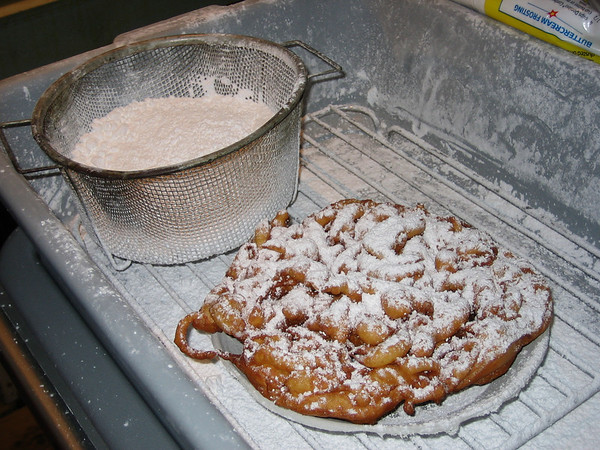
Funnel cake fresh from the fryer
Not everyone shares my view. Called “drechter kuche” by its creators, the Pennsylvania Dutch, the funnel cake was reputedly served to farmers as a mid-morning snack. Today, however, most people consume them at street fairs, carnivals, festivals and concerts.
Unlike beignets, the funnel cake starts with a batter of eggs, milk, flour, brown sugar, vanilla and baking powder. Drizzled into a deep fryer, the resultant cake gets sprinkled with powdered sugar and optionally topped with apples, strawberries, or chocolate sauce. No question that it’s a bit heavier — and sweeter — than its French counterpart.
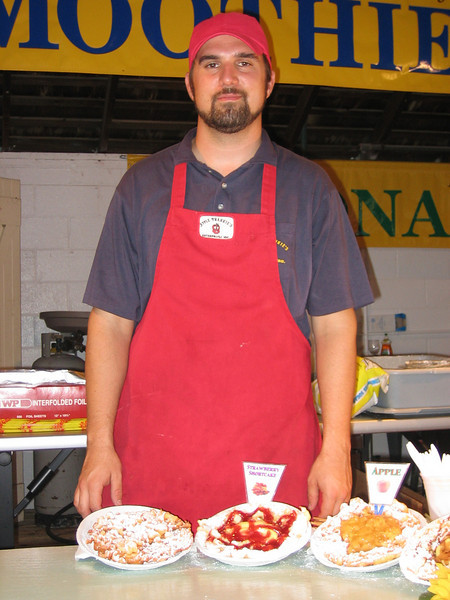
Funnel cake “heir” Cody Wilmer with three types of funnel cakes
So, which is the better deep-fried sweet? After years of random samples and thoughtful analysis I fear that I have to sit the fence on this one. Whether for breakfast, dessert, dinner or a late night snack both are a divine delicacy.
BEIGNETS
From Rima and Richard Collin’s “The New Orleans Cookbook” (Alfred A. Knopf, 2004)
Makes roughly 5 dozen beignets
*Note that the dough must be prepared in advance and refrigerated overnight. If you don’t wish to make the beignets right away, the dough will keep for 1 week in the refrigerator.
1 1/2 cup warm water
1 package active dry yeast
1/2 cup sugar
1 teaspoon salt
2 large eggs
1 cup undiluted canned evaporated milk
7 cups flour
1/4 vegetable shortening
oil for deep frying
confectioner’s sugar
Put the warm water in a large bowl, add the dry yeast and stir until thoroughly dissolved. Add the sugar, salt, eggs and evaporated milk. Slowly stir in 4 cups of flour. Beat with a wooden spoon until smooth and well combined. Beat in the shortening then add the remaining flour, about 1/3 cup at a time. Stir until it becomes too stiff to do so and then work the dough with your fingers. Cover the bowl with plastic wrap and refrigerate overnight.
On a clean, floured surface roll out the dough to a thickness of 1/8-inch. Using a sharp knife, cut the dough into rectangles measuring 2 1/2 inches by 3 1/2 inches.
Preheat the oven to 200 degrees Fahrenheit. Preheat the oil in a deep fryer to 360 degrees Fahrenheit.
Fry 3 or 4 beignets at a time until they are puffed and golden brown on both sides, about 2 to 3 minutes per batch. Using tongs, turn them over once or twice so that they are evenly browned. Drain each batch on a wire cooling rack. Place them on a platter covered with paper towels and put the platter in the oven to keep warm. Repeat with the remaining beignets.
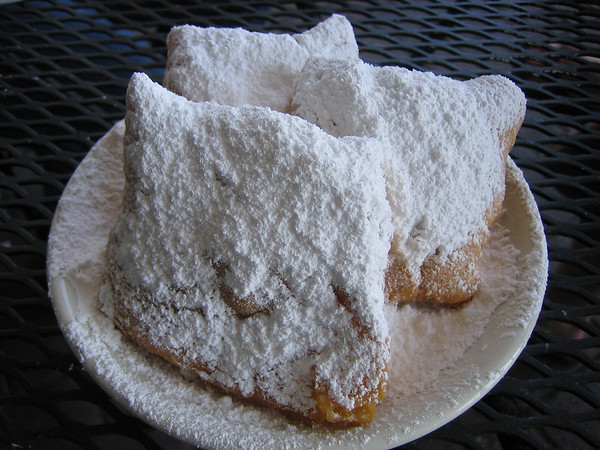
Beignets!
Liberally cover the beignets with powdered sugar and serve hot. Yum!